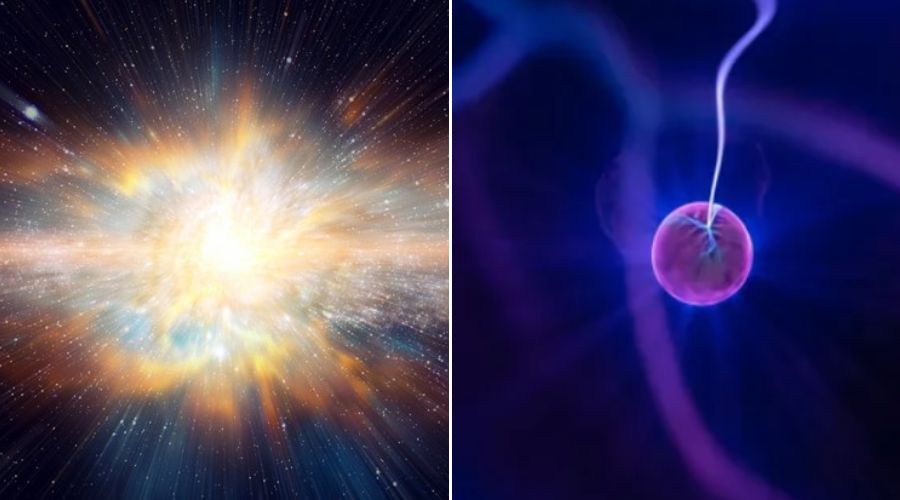We live in a cosmos of mystery and wonder, where the invisible forces of nature shape our destiny and our understanding of reality. One of the most elusive and enigmatic of these forces is dark matter, the mysterious substance that makes up most of the mass of the universe, but whose nature and origin remain unknown.

Dark matter is so named because it does not interact with light or any other form of electromagnetic radiation. It is invisible to our eyes and our telescopes, and we can only infer its existence from its gravitational effects on ordinary matter. Dark matter is believed to be responsible for holding galaxies together, shaping the large-scale structure of the universe, and influencing the formation of stars and planets.

But what is dark matter made of? How did it come to be? And how can we detect it? These are some of the questions that scientists have been trying to answer for decades, using a variety of methods and experiments. One of the most promising ways to search for dark matter is to look for rare events that could be caused by dark matter particles colliding with ordinary atoms.
One such experiment is XENON1T, a detector located deep underground in Italy, designed to detect tiny flashes of light and electric signals produced by such collisions. XENON1T uses a tank filled with 3.2 tons of ultra-pure liquid xenon, a noble gas that is very sensitive to interactions with dark matter particles. The detector is shielded from cosmic rays and other sources of noise by a thick layer of rock and water, and is monitored by hundreds of sensors that can record the slightest signals.
The XENON1T collaboration announced a remarkable discovery: they had observed an event that was so rare that it had never been seen before in the history of science. The event was a decay of a xenon-124 atom, an isotope of xenon that has 54 protons and 70 neutrons in its nucleus. The decay involved the simultaneous transformation of two protons into two neutrons, emitting two electrons and two neutrinos in the process. This type of decay, known as double electron capture, is extremely rare because it requires the presence of two electrons with precisely the right energy and position to be captured by the protons.
How rare is this event? According to the XENON1T collaboration, the half-life of xenon-124 is about 1.8 x 10^22 years, which means that it takes that long for half of the atoms to decay. This is more than a trillion times longer than the age of the universe, which is about 13.8 billion years. In fact, this is the longest half-life ever measured for any process in nature. The XENON1T collaboration estimated that they had observed one such event in their detector after two years of data collection.
This discovery is not only a testament to the sensitivity and precision of the XENON1T detector, but also a window into the fundamental nature of matter and energy. By observing such a rare event, we can learn more about the properties and interactions of subatomic particles, such as electrons, protons, neutrons, and neutrinos. We can also test our theories and models of nuclear physics, which describe how atoms behave and change over time.
But what does this have to do with dark matter? The answer is that this event could also be a sign of something else: a new type of dark matter particle that could interact with xenon atoms in a similar way as double electron capture. Such a particle, called an axion, has been proposed by some physicists as a possible candidate for dark matter. Axions are hypothetical particles that are very light and very weakly interacting, making them extremely hard to detect. However, under certain conditions, axions could convert into photons, or vice versa, in the presence of a strong magnetic field. This could result in a tiny change in the energy levels of electrons in atoms, which could trigger a double electron capture event.
The XENON1T collaboration has not claimed that they have detected axions or dark matter, but they have set new limits on the possible mass and interaction strength of axions. They have also opened up new possibilities for future experiments that could use similar techniques to search for dark matter and other exotic phenomena. The XENON1T detector has been upgraded to XENONnT, which will have a larger mass of liquid xenon and improved sensitivity. The new detector will continue to explore the dark side of the universe, looking for more clues and surprises that could reveal the secrets of our cosmic origins.
Reference(s): RPI








